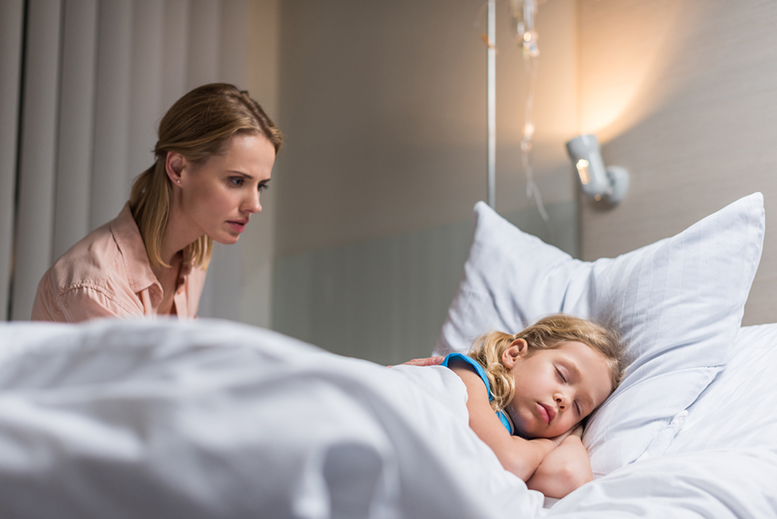Children are at an increased risk of catching pneumonia because their immune systems are under-developed. As opposed to a case of pneumonia an adult experiences, children with pneumonia may not exhibit the hallmark signs and symptoms of pneumonia such as a high fever and a stubborn cough. Pneumonia is much more sneaky when it affects children.
While symptoms of pneumonia typically differ depending on the age of children, there is a group of warnings that can help you reach the conclusion that your kid is suffering from more than just a severe cold.
Mild Pneumonia in Kids
Bacterial pneumonia types such as mycoplasma pneumonia and chlamydophila pneumonia typically present themselves with symptoms that are mild, even when they affect children. This pneumonia type–also referred to as walking pneumonia–is most common children attending school.
Symptoms of walking pneumonia may not be severe enough to keep your children from attending school but usually include a moderate fever, a dry cough, headache, and mild lethargy. Mycoplasma pneumonia is characterized by hallmark symptoms such as a fever, coughing, headache, rashes, strep throat, and even ear infections.
The good news is that this type of pneumonia is usually not serious and easily treated with antibiotics.
Moderate Pneumonia in Kids
Among children of ages 4-5, pneumonia is typically viral. Children with viral pneumonia tend to exhibit symptoms that are also common with other viral infections, including a cough, fever, sore throat, congestion, decreased appetite, and low energy.
Severe Pneumonia in Kids
School children and teens are more prone to catching bacterial pneumonia. Severe cases of bacterial pneumonia typically arise more suddenly than a run-of-the-mill cold or the flu, leading to more extreme symptoms, including a high fever accompanied by chills and sweats, feeling flushed, breathlessness, wheezing, and discoloration on the lips and nails.
Pneumonia in Babies and Young Children
Babies and infants may not exhibit any noticeable pneumonia symptoms. Given that babies and children under 2 also cannot convey their complaints, diagnosis can prove to be much more difficult. Regardless, here are some the common symptoms that can point to pneumonia in babies and infants: paleness, lethargy, feeding difficulties, excess irritability and crying, and vomiting.
There is only one surefire way to determine whether your child has a case of pneumonia, and that is to take your child to his or her doctor. By watching out for early signs of pneumonia in children, parents can also render a visit to the emergency room unnecessary. Nonetheless, pneumonia can advance fairly fast in children, especially among babies and young children.
Young children with pneumonia typically breathe rapidly, and medical professionals say that the extra effort their stomach muscles make to facilitate their breathing is usually visible. If you notice that your child is breathing faster than usual, the best course of action is to contact his or her doctor as soon as possible.
Featured Image: Depositphotos/© ArturVerkhovetskiy


